Pothos is a common houseplant that is known for its easy care. However, pothos can be sensitive to temperature changes. This article will discuss the signs of temperature stress in pothos and how to solve the problem.
What Temperature Is Too Cold for Pothos?
If you see these signs, it means that the plant is too cold and you should move it to a warmer location. Pothos plants are tropical plants, so they prefer warm temperatures. If the temperature gets too cold, the leaves of the pothos plant will start to turn brown and curl up. However, they can tolerate some cold temperatures. The plant will also stop growing.
What Temperature Should Pothos Be In?
They should be kept in a temperature range of 60-85 degrees Fahrenheit. If the temperature rises above 85 degrees, the leaves will start to turn yellow and the plant will stop growing. If the temperature drops below 60 degrees, the leaves of the plant will start to turn brown and drop off. Pothos plants are tropical plants that thrive in warm temperatures.
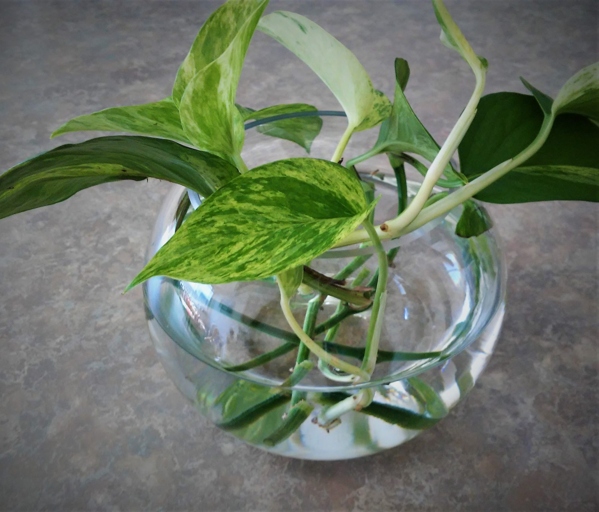
If the temperature in the room drops below 60 degrees, you may see the leaves of the plant start to turn brown and drop off. If you are growing pothos indoors, make sure to keep the temperature in the room above 60 degrees Fahrenheit. Pothos plants are very tolerant of different temperatures, but they prefer to be in a warm environment. If the temperature in the room rises above 85 degrees, the leaves of the plant will start to turn yellow and the plant will stop growing.
Signs Your Pothos Has Been Exposed to The Wrong Temperature
Pothos are tropical plants and prefer warm, humid conditions. If the temperature is too cold, the plant will go into shock and may die. If your pothos is wilting, drooping, or its leaves are turning brown or yellow, it may be a sign that it has been exposed to the wrong temperature.
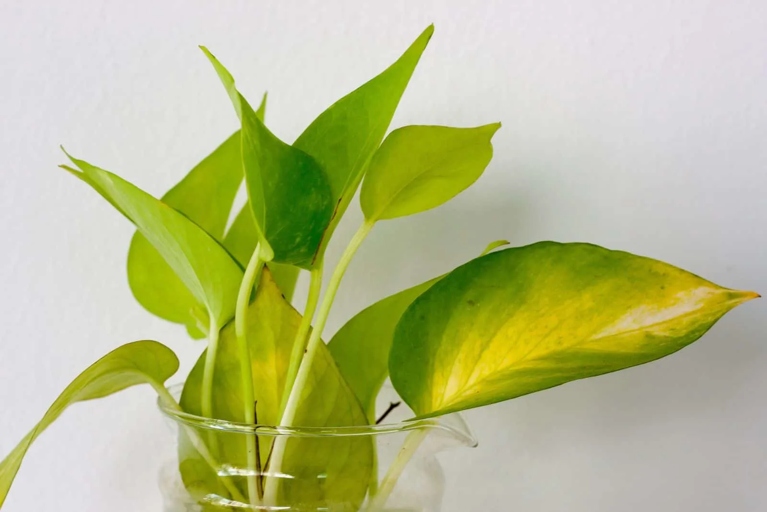
If you think your pothos has been exposed to the cold, take it inside and place it in a warm, sunny spot. If the leaves are still wilted, you can try misting them with warm water or placing a humidifier nearby. If the leaves are brown or yellow, they may be damaged beyond repair and you may need to start over with a new plant.
Leaves Drooping
Leaves drooping is one of the most common problems with pothos plants. The leaves may droop for a variety of reasons, including too much or too little water, too much or too little light, or even temperature changes.
If the soil is soggy, the plant needs less water. If the soil is dry, the plant needs more water. If the leaves of your pothos plant are drooping, the first thing you should do is check the soil.
Once you’ve adjusted the watering, check the light. If the plant is in too much sun, the leaves will scorch. If the plant is in too much shade, the leaves will droop. Pothos plants need bright, indirect light.
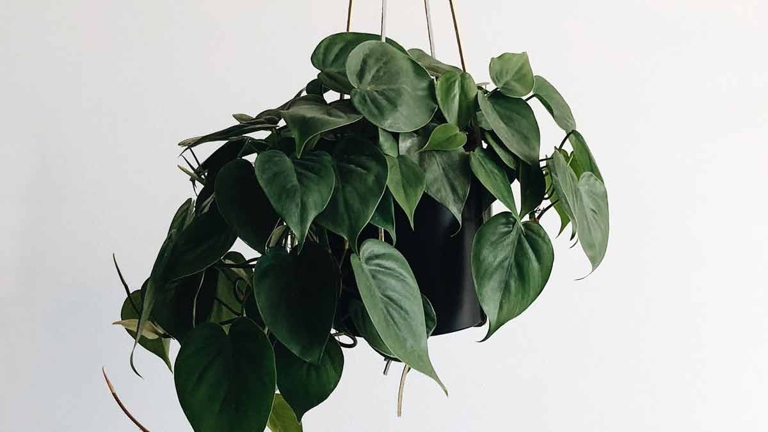
Pothos plants prefer warm temperatures, between 65 and 80 degrees Fahrenheit. If the temperature is too hot, the leaves will scorch. Finally, check the temperature. If the temperature is too cold, the leaves will droop.
If the leaves are pale green, the plant may need more nitrogen. If the leaves are yellow or brown, the plant may need more iron. If you’ve checked the soil, light, and temperature and the leaves are still drooping, the problem may be a nutrient deficiency. Pothos plants need a balanced fertilizer every two weeks during the growing season.
If you’ve tried all of these solutions and the leaves are still drooping, the plant may be too stressed and will need to be replaced.
Blackened Leaves
Both of these can cause the leaves to scorch and turn black. If your pothos leaves are blackening, it is likely due to too much direct sunlight or too high of temperatures.
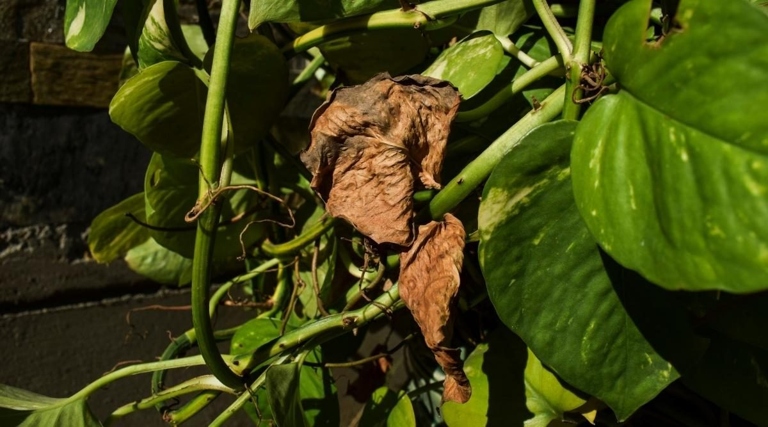
If the temperature in your home or office gets too hot, try moving your pothos to a cooler location. To prevent this from happening, make sure to give your pothos plant indirect sunlight or filtered light.
If the leaves on your pothos are already blackened, you can try to save the plant by trimming off the affected leaves. With proper care, your pothos should be able to bounce back from blackened leaves.
Dry Leaf Edges
Pothos are native to tropical climates and prefer high humidity levels. If the air in your home is too dry, it can cause the leaves to dry out and eventually die. If you notice your pothos leaves beginning to brown and crisp at the edges, it could be a sign that the plant is not getting enough humidity.
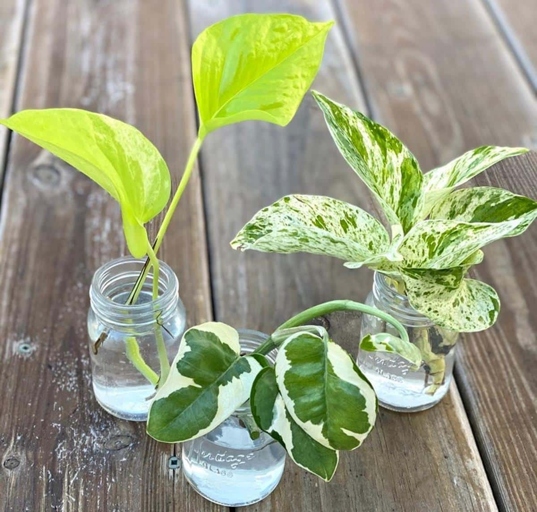
You can also try placing the pot in a tray of water and pebbles. There are a few solutions to this problem. First, you can try misting the leaves with water a few times a day. This will help to increase the humidity around the plant. The water will evaporate and help to increase the humidity in the air.
If you live in a particularly dry climate, you may need to invest in a humidifier to help keep your pothos healthy. With a little extra care, you can keep your pothos thriving even in a dry environment.
Leaves Curling
If the leaves are curling and turning yellow, it could be a sign of too much water. The leaves will turn yellow and then brown and drop off the plant if it is getting too much water. The leaves will curl up and become dry and crispy if the plant is too dry. If you notice your pothos leaves curling, it could be a sign that the plant is not getting enough water.
Sunscald
Sunscald can be prevented by providing adequate shade for plants, especially during the hottest hours of the day. Sunscald is a type of plant damage that can occur when leaves are exposed to direct sunlight for extended periods of time. If sunscald does occur, the damaged leaves can be removed and the plant can be given extra water and fertilizer to help it recover. The leaves may become discolored or develop brown or yellow patches, and the plant may eventually die.
Can a Pothos survive outside in winter?
Pothos are also sensitive to drafts, so keep them away from windows and doors. If you must leave your pothos outside, make sure to protect it from the cold by wrapping it in burlap or putting it in a sheltered spot. If you live in an area with cold winters, it’s best to keep your pothos indoors. If your pothos does get too cold, it will start to turn yellow and its leaves will drop off. Pothos are a tropical plant, so they don’t do well in cold weather. If this happens, don’t despair – your pothos will probably bounce back once the weather warms up.
Can Pothos Take Frost?
However, they can survive in a range of temperatures, including frosty conditions. Pothos is a tropical plant that is typically found in humid environments. While pothos can tolerate cold temperatures, they may experience some leaf damage if exposed to frost for extended periods of time. If you live in an area with cold winters, it’s important to take steps to protect your pothos plants from the cold.
One way to protect pothos from frost is to bring them indoors when the temperature starts to drop. This will help to insulate the plants and prevent them from being damaged by the cold. If you can’t bring them inside, try covering them with a frost blanket or burlap sack.
This will help to keep the plants hydrated and prevent them from being damaged by the cold. Another way to protect pothos from frost is to water them regularly.
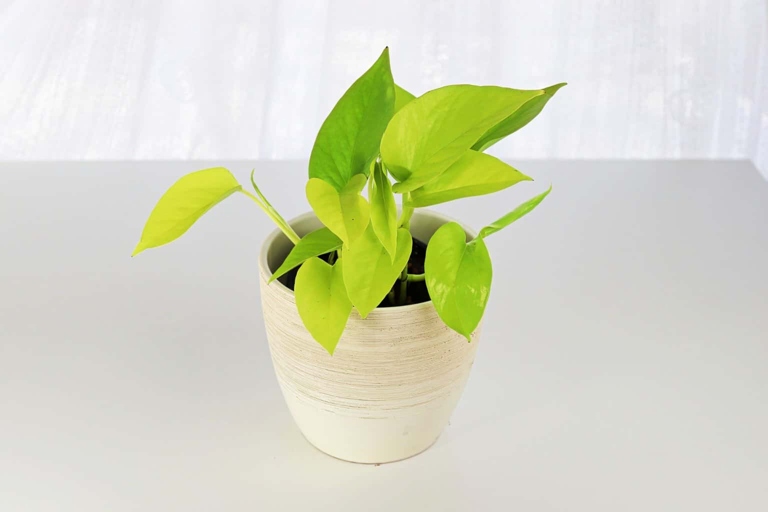
By bringing them indoors or covering them with a frost blanket, you can help to ensure that they survive the winter season. If you live in an area with cold winters, it’s important to take steps to protect your pothos plants from the cold.
How Do You Take Care of Pothos During Winter?
The plant will also stop growing. To prevent this from happening, you should move your pothos indoors or into a greenhouse during the winter months. Pothos are a tropical plant that does not tolerate cold temperatures well. If the temperature drops below 50 degrees Fahrenheit, the leaves of the pothos will start to turn brown and wilt.
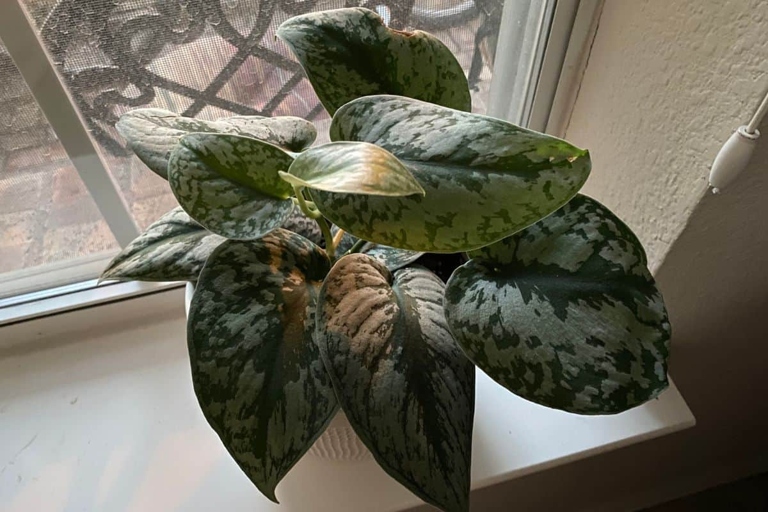
Make sure to keep the plant out of direct sunlight and wind to prevent further damage. If you cannot move your pothos indoors, you can try to protect it from the cold by wrapping it in burlap or placing it in a plastic bag.
If your pothos does start to show signs of cold damage, you can try to cut off the affected leaves and stems. The plant may be able to recover if the roots are still healthy.
By taking these precautions, you can help your pothos survive the winter and enjoy its beautiful foliage for many years to come.
Frequently Asked Questions
1. What are the ideal temperature conditions for a pothos plant?
The ideal temperature conditions for a pothos plant are between 65 and 75 degrees Fahrenheit.
2. What are the signs that a pothos plant is not tolerating the temperature?
If a pothos plant’s leaves start to turn yellow or brown, it is not tolerating the temperature.
3. What are some solutions for a pothos plant that is not tolerating the temperature?
Some solutions for a pothos plant that is not tolerating the temperature include moving the plant to a cooler location or increasing the humidity around the plant.
4. What is the ideal humidity level for a pothos plant?
The ideal humidity level for a pothos plant is between 40 and 50 percent.
5. What are the signs that a pothos plant is not tolerating the humidity?
If a pothos plant’s leaves start to turn yellow or brown, it is not tolerating the humidity.
6. What are some solutions for a pothos plant that is not tolerating the humidity?
Some solutions for a pothos plant that is not tolerating the humidity include moving the plant to a more humid location or increasing the humidity around the plant.
Final thoughts
Pothos are a tropical plant that can tolerate a wide range of temperatures, from 50 to 95 degrees Fahrenheit. However, they prefer to be in the 70 to 80 degree range. If the temperature drops below 50 degrees, the leaves will start to turn brown and drop off. If the temperature gets above 95 degrees, the leaves will start to wilt. There are a few things you can do to help your pothos tolerate extreme temperatures. If the temperature drops, you can move your plant to a warmer location. If the temperature rises, you can mist your plant with water or move it to a cooler location.
